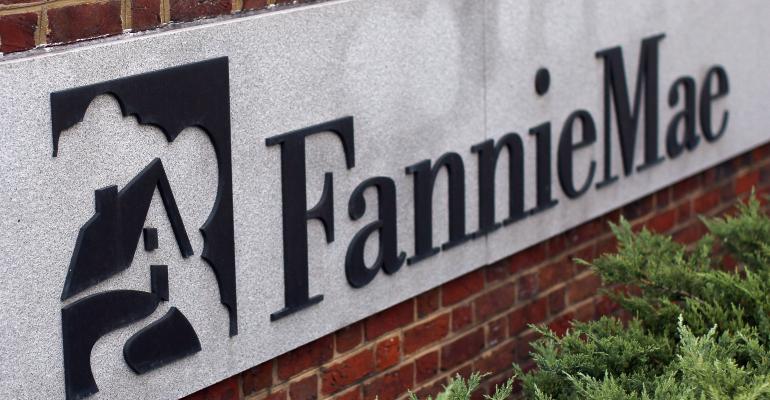Freddie Mac and Fannie Mae are on track to lend more money to multifamily properties in 2019 than they did last year.
“Our expectation… is that loan originations in 2019 will hit a record number for the GSEs,” says Mitchell W. Kiffe, co-head of national production for the debt & structured finance group at CBRE Capital Markets. “The GSEs have been the dominant players in multifamily finance for many, many years.”
Earlier this summer, experts worried that Fannie Mae might even hit the limit on how much money government officials allow the company to invest in conventional, permanent loans on apartment properties. To keep from crossing that line, Fannie Mae has changed its incentives to steer more apartment buyers to take out loans that qualify for programs that don’t count towards its lending limits.
Freddie Mac and Fannie Mae become even more dominant
The loan programs of Freddie Mac and Fannie Mae offer permanent mortgages that covers 80 percent of the value of an apartment property with an interest rate fixed at 175 to 195 basis points over the yield on 10-year Treasury bonds, according to CBRE.
Those interest rates spiked upwards for Fannie Mae loans earlier this summer, when the GSEs purposefully slowed down the amount of loans they were making on apartment properties to keep within their lending limits. Officials at the Federal Housing Finance Agency (FHFA) limit the volume of loans on apartment properties that Freddie Mac and Fannie Mae can buy to $35 billion each a year, with a few exceptions. Loans to apartment properties that count as affordable housing or energy-efficient “green” properties do not count towards the FHFA limits.
In 2019, to participate in the green lending program, borrowers need to cut the water and energy used at their buildings by 30 percent—up from 25 percent last year. More importantly, half of that reduction will have to come from energy. In the past, borrowers have focused the vast majority of their efforts on water savings.
In 2018, Freddie Mac made $77.5 billion in loans on apartment properties. Fannie Mae made $64.4 billion in apartment loans. Both GSEs kept within their lending limits because more than half of their loans (58 percent) were on “green” or affordable properties that didn’t count toward their loan limits.
Both Fannie Mae and Freddie Mac made many more loans in early 2019 than in early 2018. For example, from the beginning of 2019 through June, Fannie Mae financed a total of $34.1 billion in apartment loans, up from $25.8 billion during the same period in 2018.
Even though much of that volume would not count towards the lending limits set by the FHFA, the GSEs were still burning through their lending limits. To bring more borrowers into their uncapped programs, the GSEs offered interest rates that were discounted by as much as 50 basis points compared to conventional rates, according to CBRE. That discount is now shrinking back towards 20 basis points.
Low interest rates return
A few years ago, it seemed inevitable that long-term interest rates would rise. The benchmark yield on 10-year U.S. Treasury bonds slipped to 2.05 percent in November 2016. “That was the peak of dirt cheap money,” says Dave Borsos, vice president of capital market for the National Multifamily Housing Council (NMHC). So, economists were unsurprised when interests rate finally began to climb.
“A year ago, the yield on the 10-year Treasury bond started moving up,” says Borsos. “Even Jamie Dimon said that the 10-year will get to 4 percent… There was a brief moment when there was a lot of concern.”
But long-term interest rates have fallen again. The yield on 10-year Treasuries had slumped to roughly 2.0 percent in late July 2019. And the future seems likely to bring even lower interest rates. “The Fed [is] likely to cut the Fed Funds rate… 25 basis points in July and another 25 in the fall,” says Kiffe.





